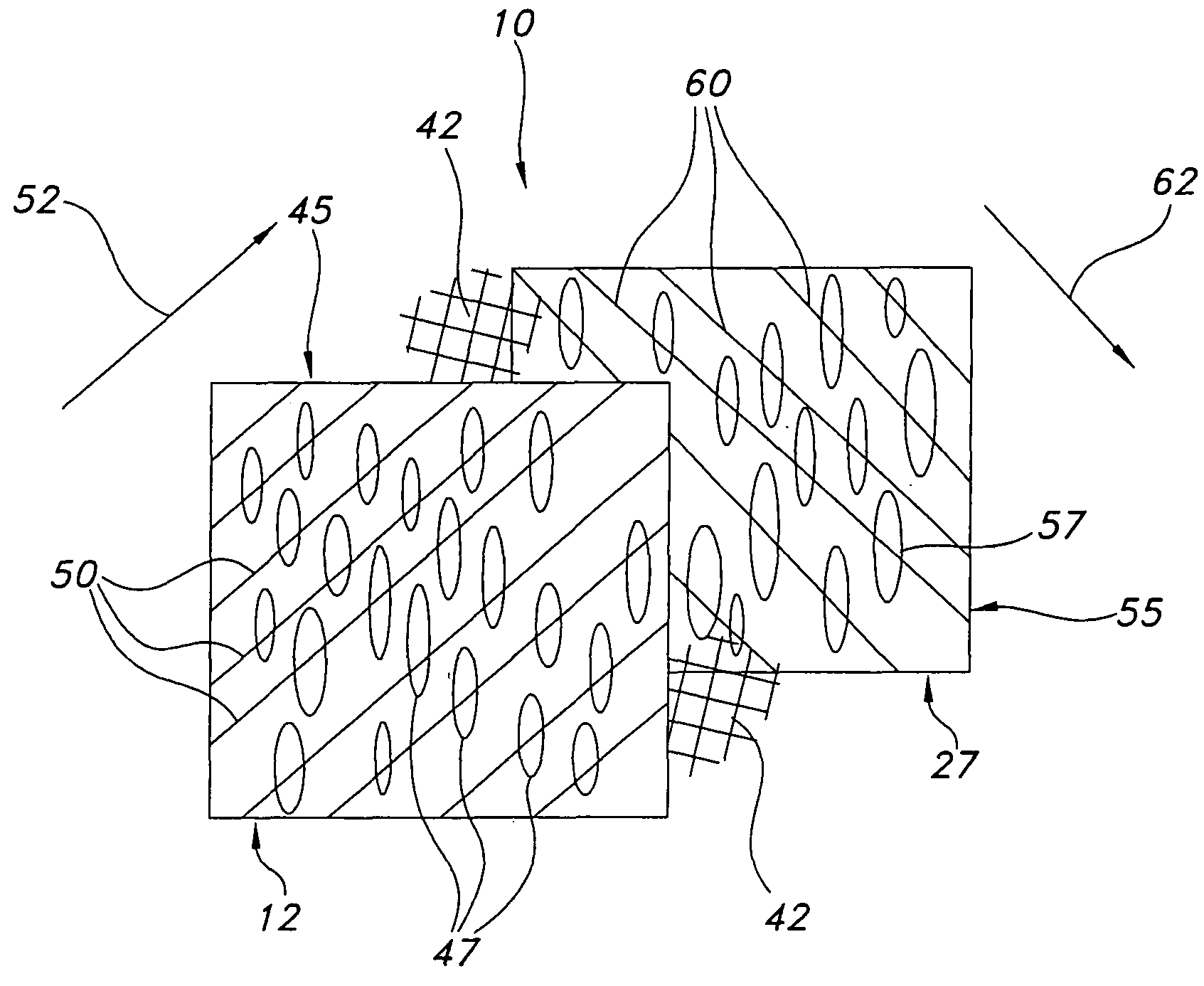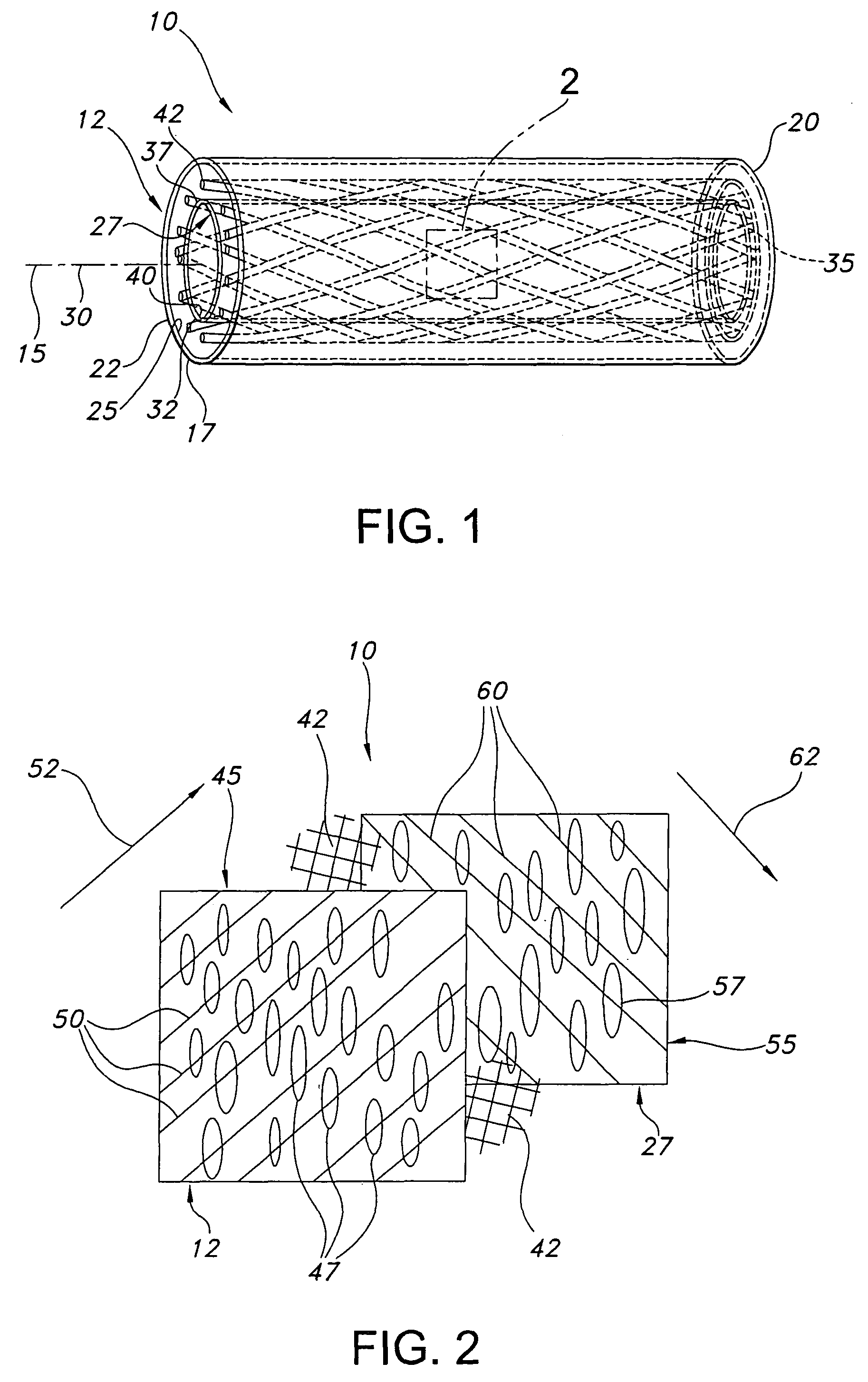Skewed nodal-fibril ePTFE structure
a nodal fibrillary and eptfe technology, applied in the field of structures, can solve the problems of kinking of the tubular structure of the eptfe, the tendency of the eptfe to kink when subjected to bending force, and the risk to the patient, so as to enhance the utility of the eptfe and increase the flexibility and resistance to kinking of the eptfe. the effect of the tubular structur
- Summary
- Abstract
- Description
- Claims
- Application Information
AI Technical Summary
Benefits of technology
Problems solved by technology
Method used
Image
Examples
Embodiment Construction
[0021]Referring to the drawings and more particularly to FIG. 1, a skewed nodal-fibril ePTFE structure 10 is shown for implantation within a body. The ePTFE structure 10 includes a cover ePTFE tubular structure 12 which has a longitudinal axis 15, and opposite ends 17, 20. The cover ePTFE tubular structure 12 has outer and inner surfaces 22, 25 and an annular or ring shaped cross-section. The ePTFE structure 10 further includes a liner ePTFE tubular structure 27 which has a longitudinal axis 30, and ends 32, 35. The liner ePTFE tubular structure 27 has outer and inner surfaces, 37, 40, and an annular or ring shaped cross-section.
[0022]The liner ePTFE tubular structure 27 is within the cover ePTFE tubular structure 12 in coaxial relation therewith such that the longitudinal axes 15, 30 coincide with one another. The longitudinal relation between the cover and the liner ePTFE tubular structures 12, 27 provide for the ends 17, 32 to have the same longitudinal positions and for the ends...
PUM
| Property | Measurement | Unit |
|---|---|---|
| rotation 82 | aaaaa | aaaaa |
| rotation 97 | aaaaa | aaaaa |
| micro-structure | aaaaa | aaaaa |
Abstract
Description
Claims
Application Information
 Login to View More
Login to View More - R&D
- Intellectual Property
- Life Sciences
- Materials
- Tech Scout
- Unparalleled Data Quality
- Higher Quality Content
- 60% Fewer Hallucinations
Browse by: Latest US Patents, China's latest patents, Technical Efficacy Thesaurus, Application Domain, Technology Topic, Popular Technical Reports.
© 2025 PatSnap. All rights reserved.Legal|Privacy policy|Modern Slavery Act Transparency Statement|Sitemap|About US| Contact US: help@patsnap.com



